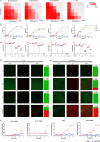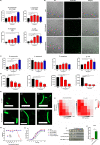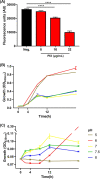Pixantrone Sensitizes Gram-Negative Pathogens to Rifampin
- PMID: 36318018
- PMCID: PMC9769682
- DOI: 10.1128/spectrum.02114-22
Pixantrone Sensitizes Gram-Negative Pathogens to Rifampin
Abstract
The emergence of bacterial drug resistance poses a severe threat to global public health. In particular, antimicrobial-resistant pathogens lead to a high rate of treatment failure and significantly increase mortality. Repurposing FDA-approved compounds to sensitize superbugs to conventional antibiotics provides a promising strategy to alleviate such crises. Pixantrone (PIX) has been approved for treating aggressive B-cell non-Hodgkin's lymphoma. By high-throughput drug screening, we profiled the synergistic activity between PIX and rifampin (RFP) against Gram-negative extensively drug-resistant isolates by checkerboard assay. Mechanistic studies demonstrated that PIX impacted the flagellum assembly, induced irreversible intracellular reactive oxygen species accumulation and disrupted proton motive force. In addition, the combination of PIX with RFP possesses effective antimicrobial activity against multidrug-resistant strains in vivo without detected toxicity. Collectively, these results reveal the potential of PIX in combination with RFP as a therapy option for refractory infections caused by Gram-negative pathogens. IMPORTANCE Bacterial resistance has become increasingly serious because of the widespread use and abuse of antibiotics. In particular, the emergence of multidrug-resistant bacteria has posed a serious threat to human public health. Drug repurposing, the process of finding new uses for existing drugs, provide a promising pathway to solve antimicrobial resistance. Compared to the development of novel antibiotics, this strategy leverages well-characterized pharmacology and toxicology of known drugs and is more cost-effective.
Keywords: Gram-negative pathogen; drug repurposing; pixantrone; proton motive force; reactive oxygen species.
Conflict of interest statement
The authors declare no conflict of interest.
Figures







References
-
- O'Neill J. 2016. Tackling drug-resistant infections globally: final report and recommendations, on review on antimicrobial resistance. https://amr-review.org/sites/default/files/160525_Final%20paper_with%20c....
Publication types
MeSH terms
Substances
LinkOut - more resources
Full Text Sources
Medical
Molecular Biology Databases

